Kaygusuz Abdal, Gaybi adıyla anılan hayatına başladı. 14. yüzyılın sonlarında Anadolu’nun Teke ilçesinde soylu ve aristokrat bir ailenin çocuğu olarak dünyaya geldi.
Prens 18 yaşına geldiğinde bir gün bir grup insanla birlikte ava çıktı. Av sırasında alçak bir tepenin üzerinde otlayan güzel bir ceylanı gördü ve hemen bir ok fırlattı ve ceylanın sol arka bacağının altını deldi. Yaralı olan hayvan, Gaybi Bey’in peşinde koşarak havalandı.
Ceylan büyük bir dergâhın kapısından içeri koştu. Arkasından Gaybi Bey de içeri girip geyiğin peşine düştü. Dervişler Gaybi’yi tekkenin başı olan (Hacı Bektaş Veli’nin halifesi olan) Abdal Musa Sultan’ın yanına götürdüler ve ona ne aradığını sordular. Gaybi, vurduğu ceylanı aradığını söyledi. Abdal Musa ona oku görürse çıkarıp çıkaramayacağını sordu. Gaybi yapabileceğini söyledi. Abdal Musa daha sonra kolunu kaldırdı ve şöyle dedi: “Bakın! Bak bakalım bu senin okun mu?” Gaybi, okun Abdal Musa’nın böğrüne saplandığını gördü. Ceylan kılığında dolaşan azizi vurduğunu anladı. Ve bununla birlikte bayıldı.
Gaybi, şoku atlatınca Abdal Musa Sultan’ın elini öptü ve nasib almasına izin verilmesi için yalvardı. Abdal Musa, gencin öncelikle babasından izin alması gerektiğini söyledi. Gaybi, o günden itibaren, kalma izni verilmese bile tekkeden ayrılmayacağını açıkladı. Onun bu bağlılığını duyan Abdal Musa onu hizmetine kabul etti.
Gaybi’nin babası, oğlunun derviş olduğunu duyunca üzüldü. Buna dayanamadı ve Abdal Musa’yı vilayetin hakimi Teke Bey’e şikayet etti. Şikayeti okuyan Teke Bey, genç Gaybi’nin tekkeden uzaklaştırılmasını istedi. Gaybi’ye babasına kadar eşlik etmek üzere Abdal Musa tekkesine gitmek üzere Kilagali İsa adında bir elçi seçti. Kilagali İsa gelince doğruca Abdal Musa’nın yanına gitti ve onunla yüz yüze görüştü. Ancak azizden açık bir yanıt aldı. Abdal Musa’yı zor kullanarak tehdit ettikten sonra Kilagali İsa tekkesini yaptı. Kilagali İsa’nın atına binmeye çalıştığı sırada ayağı üzengiye takıldı. Yere düştü ve irkilen at onu ayaklar altında ezerek öldürdü.
Bu haber Teke Bey’e ulaşır ulaşmaz savaşçılarını toplayarak Abdal Musa’nın yanına doğru yola çıktı. Bu durum Abdal Musa’ya bildirilir ve dört yüz dervişiyle birlikte Teke Bey’in karşısına çıkmak için yola koyulur, tüm hileleri ile sema yapar. Teke Bey, semada bulunan derviş çetesine rastlar ve Abdal Musa ile yandaşlarını yakmak için çevredeki tüm çalı ve ağaçların ateşe verilmesini emreder. Ama sema yaparak alevlerin içinden zarar görmeden geçerler ve onları tamamen söndürürler. Bu mucizeyi gören Teke Bey’in askerleri kaçarken kendisi de atından düşerek hayatını kaybetti.
Bütün bunlar olup bitince Gaybi’nin babası, oğlunu Abdal Musa’ya emanet etmeye razı oldu. Daha sonra Abdal Musa, Gaybi’ye “Kaygısız” anlamına gelen “Kaygusuz” adını verdi. Kaygusuz kırk yıl tekkede kalıp çalışarak yüksek bir manevi rütbeye ulaştı.
Kaygusuz Sultan bir gün Mekke’ye hacca gitmeye karar verdi ve Abdal Musa ona bir icazet (yetki belgesi) yazdı. Kaygusuz, belgeyi güvende tutmak için kâğıdı küçük parçalara ayırıp bir fincan ayran içine koydu ve içti. Bu durum Abdal Musa’ya haber verildi ve bunun doğru olup olmadığını öğrenmek için Kaygusuz’u çağırdı. Onay alınca Kaygusuz’u kutsadı ve bu kutsamayla şiir dizeleri yazmaya ve Hakikati görme gücüne sahip olmaya başladı.
Uzun yıllar Abdal Musa’nın tekkesinde kaldı ve hayatını hizmete adadı. Kaygusuz, Abdal Musa Sultan’ın vefatından sonra Ortadoğu’yu dolaşarak sonunda kendi tekkesini kurduğu ve mezarının bulunduğu Kahire’ye geldi.
“Burada 15. yüzyılda muhtemelen Osmanlı İmparatorluğu’nun Avrupa vilayetlerinde yaşamış bir Bektaşi mutasavvıfı olan Kaygusuz Abdal’dan bahsetmek gerekir. Bir Bektaşi tekkesi kurmak için Kahire’ye yerleştiği söyleniyor; Geleneğe göre mezarı, Kahire’nin birçok azizinin gömülü olduğu Mukattam Tepesi’ndedir. Kaygusuz, Osmanlı İmparatorluğu’nda hayvan derileriyle kaplı ve gümüş küpe takarak dolaşan abdalan-i Rum dervişlerinden biri olabilir. Kaynaklara göre, bu tür dervişlerin örnek bir örneği, on dördüncü yüzyılda ortalıkta ayı gibi bağıran ve maymun gibi dans eden Barak Baba’ydı. Abdalan-ı Rumlar aynı zamanda esrar kullanmalarıyla da meşhurdu. Siyah Kalam olarak bilinen on beşinci yüzyıl ressamına atfedilen, Kaygusuz’un şiirine neredeyse mükemmel örnekler oluşturan garip, vahşi insanları gösteren resimlerde bu grupların anılarına rastlanır.
Kaygusuz’un şiirleri tasavvufun en tuhaf ifadeleri arasındadır. İyi yemek hayallerini ayrıntılı bir şekilde anlatmaktan çekinmiyor – Tanrı’dan ona helva, kızarmış kuzu budu, her türlü çorba, sebze ve hatta domuz kızartmasıyla dolu yüzlerce tabak bağışlaması isteniyor! Eski kürk şapkası ve sopasıyla bu kaba dervişten, şeftali gibi yüzünü ve bal rengi dudaklarını öpmek isteyen bu baş belasından kurtulmaya çalışan sevimli bir gençle yaşadığı aşk maceralarını şarkı söylemekten de çekinmiyor. çekici gençliği ilahi güzelliğin bir tezahürü olarak öven sayısız aşk sözlerinin parodisi. En eğlencelisi de Kaygusuz’un Yediler ve Yediler’in yardımıyla pişirmeye çalıştığı kaz üzerine yazdığı şiir: Dokuzlar (mistik hiyerarşinin grupları): “Kırk gün pişirdim ama olmadı”, hatta bulgur bile. Et suyuna attığı “Allah” deyip uçup gidiyor, kaz ise kafasını tavadan kaldırıp sırıtıyor. Bu inatçı, ölümsüz hayvan muhtemelen şairin evcilleştirmeyi zor bulduğu alt ruhtur.
Kaygusuz’un bir tekerlemesi adeta bir tekerlemenin mükemmel tercümesi gibi:
kaplu kaplu bağalar kanatlanmiş uçmağa
Kaplumbağalar uçmak için kanat aldılar
Bu gibi ayetlerin daha derin bir tasavvuf hikmeti mi içerdiğine, yoksa bazı derviş çevrelerinde var olduğu bilinen gizli bir dile mi ait olduğuna karar vermek zordur. Hellmut Ritter, mutfak ifadelerinin mistik terimlerle eş tutulduğu bir Türkçe kelime dağarcığı keşfetmiştir – “şehit oğlu” kuzu, biryani, “En Yüce Hakim” helva vb. Bu, bir bakıma mistik gerçekliğe diğer şiirsel biçimlerden daha yakın olandır; paradoks, arayan kişiyi hedefe doğru yönlendirmenin en meşru biçimidir. Bu tür şiirler kolaylıkla “gezilerin” sonuçları olarak yorumlanabilir ve bu olasılık, en azından Kaygusuz Abdal örneğinde göz ardı edilemez, çünkü kayğusuz “sans souci” kelimesi esrarın gizli adı olarak kullanılmıştır. Gölpınarlı’nın da gösterdiği gibi. Uyuşturucu kullanımı bazı mistik derneklerin alt düzeylerinde, özellikle de müzisyenler arasında oldukça yaygındı ve hâlâ da öyle.
İngiliz Kaynaklardan Araştıran ve Çeviren : Mehmet Özgür Ersan
Kaynak : Annemarie Schimmel İslam’ın Mistik Boyutları
Resim : Abdal Musa
Poetry
Lord, I humbly beg of You, hear my reverend request, These are words straight from the heart, they are not spoken in jest.
First, a hundred thousand loaves, also fifty thousand pies, One hundred sixty thousand buns, profusely buttered on both sides.
A thousand piglets should suffice, if added to a thousand sows, With sixty of their young, some fifty thousand water buffaloes.
Ten thousand cows, a thousand oxen for a mustard stew, The trotters separately served in vinegar, with garlic too.
A thousand sheep in casserole, an equal sum of goats at most, But fifty thousand lambs and kids to grill upon the spit, or roast.
Innumerable chickens, ducks, and in the the same proportion, geese, Some to make succulent kebabs, and others to be fried in grease.
Pray let there be dish after dish of pigeons and of tender quail, Partridge and pheasant caught in nets, arriving in an endless file.
Fifty thousand pots of rice, and saffron puddings are inferred, A thousand pots of porridge, the butter with a drum-stick stirred.
Soups with pleasant flavouring, meatballs gently made, I beg, Ducklings, and on trays of brass, sweetmeats made of starch and egg.
Fifty thousand pasties and the same amount of baklava, Honey and almond cakes galore, and countless plates of fresh okra.
Helva fit for conquerors, served on trays and heaped in bowls, For eager fingers to scoop up, making quite enormous holes.
Forty thousand, fifty thousand pecks of apricot and cherry, Apple, pear and vintage grape, will be enough to make us merry.
Biography

Kaygusuz Abdal began his life known as Gaybi. He was born in the in the late 14th century into a noble and aristocratic family of the Anatolian province of Teke.
One day, when the prince had reached his 18th year, he went out hunting with a group of his courtesans. During the hunt he spied a beautiful gazelle grazing on a low hilltop and immediately let an arrow fly which pierced the gazelle below its left hind leg. Wounded, the animal took flight with Gaybi Bey in hot pursuit.
The gazelle ran straight through the gates of a large Dervish convent. Following behind, Gaybi Bey likewise entered and inquired after the deer. The dervishes took Gaybi to the head of the tekke, Abdal Musa Sultan (who was a khalifah of Haji Bektash Veli), who asked him what he was looking for. Gaybi said he was looking for the gazelle he had shot. Abdal Musa asked him if he would be able to make out the arrow if he saw it. Gaybi responded that he could. Abdal Musa then lifted up his arm and said, “Look! See if this is your arrow!” Gaybi saw that it was indeed his arrow stuck in Abdal Musa’s side. He understood that what he had shot the saint who was wandering in the guise of a gazelle. And with that he fainted.
On recovering from his shock, Gaybi kissed the hand of Abdal Musa Sultan and implored him to be allowed to take the nasib (initiation). Abdal Musa said that the young man would first have to obtain permission from his father. Gaybi declared that from that day forward he would not leave the tekke even if permission to stay there is not granted. On hearing his devotion, Abdal Musa accepted him into his service.
Gaybi’s father was upset when he heard that his son had become a dervish. He would not stand for it and dispatched a complaint about Abdal Musa to Teke Bey, the ruler of the province. On reading the complaint Teke Bey desired that the young Gaybi be removed from the tekke. He chose an emissary by the name of Kilagali Isa to travel to the tekke of Abdal Musa to escort Gaybi back to his father. When Kilagali Isa arrived he went straight to Abdal Musa and met with him face to face. However he received from the saint a blunt response. After threatening Abdal Musa with the use of force Kilagali Isa the tekke. While trying to mount his horse Kilagali Isa’s foot became entangled in the stirrup. He fell to the ground and the startled horse trampled him to death underfoot.
As soon as word of this reached Teke Bey, he gathering up his warriors and proceeded to Abdal Musa. This is revealed to Abdal Musa and with four hundred of his dervishes set off on the road to confront Teke Bey, all the wile performing the sema. Teke Bey came upon the band of dervishes while they were in sema and order all the surrounding bushes and trees set alight in order to burn Abdal Musa and his followers. But dancing the sema they pass right through the flames unscathed and extinguish them completely. On seeing this miracle Teke Bey’s soldiers fled and he himself fell from his horse and died.
After all this has taken place, Gaybi’s father consented to give his son into care of Abdal Musa. Afterwards, Abdal Musa gave Gaybi the name “Kaygusuz” which meant “Carefree”. Kaygusuz stayed and worked in the tekke for forty years achieving a high spiritual rank.
One day Kaygusuz Sultan resolved to go on the pilgrimage to Mecca and Abdal Musa wrote an ‘ijazah (document of authorization) for him. In order to keep the document secure, Kaygusuz tore the paper into small pieces, put in into a cup of ayran and drank it down. Abdal Musa was told about this and summoned Kaygusuz to see whether this was true or not. On receiving affirmation, he blessed Kaygusuz and with this blessing he began to compose poetic verses and have the power of seeing the Truth.
He stayed on at Abdal Musa’s tekke for many years, devoting his life to service. After the death of Abdal Musa Sultan, Kaygusuz traveled throughout the Middle East and eventually came to Cairo where he founded his own tekke and where his grave is to be found.
“Here mention must be made of Kaygusuz Abdal, a Bektashi mystic who lived in the fifteenth century, probably in the European provinces of the Ottoman Empire. He is said to have settled in Cairo to found a Bektashi convent; according to tradition, his tomb is on the Muqattam Hill, where many saints of Cairo are buried. Kaygusuz may have been one of the abdalan-i Rum, dervishes who wandered through the Ottoman Empire covered with animal skins and wearing a silver earring. A model case of this kind of dervish was a certain Barak Baba in the fourteenth century, who went around shouting like a bear and dancing like a monkey, according to the sources. The abdalan-i Rum were also notorious for their use of hashish. One finds reminiscences of these groups in the paintings ascribed to the fifteenth-century painter known as Siyah Kalam, which show strange, wild people who form almost perfect illustrations for the poetry of Kaygusuz.
Kaygusuz’s poetry is among the strangest expressions of Sufism. He does not hesitate to describe in great detail his dreams of good food – God is asked to grant him hundreds of plates, filled with halvah, roast lamb’s leg, all kinds of soups, vegetables, and even roast pork! Nor does he shrink from singing about his love adventures with a charming young man, who tries to get rid of this crude dervish with his old fur cap and his stick, this nuisance who wants to kiss his peachlike face and his honey lips – a lively parody of the numberless love lyrics praising the attractive youth as a manifestation of divine beauty. Most amusing is Kaygusuz’s poem on the goose that he tries to cook with the help of the Seven and the: Nine (groups of the mystical hierarchy): “I cooked it forty days, and yet it was not done,” and even the bulghur that he throws into the broth says “Allah” and flies away, while the goose lifts its head from the pan and grins. This stubborn, die-hard animal is probably the lower soul, which the poet found difficult to tame.
A tekerleme by Kaygusuz sounds like a perfect translation of a nursery rhyme:
kaplu kaplu bağalar kanatlanmiş uçmağa
The turturturtles have taken wings to fly
It is difficult to decide whether verses like this contain some deeper mystical wisdom or whether they belong to a secret language known to exist in certain dervish circles. Hellmut Ritter has discovered a Turkish vocabulary in which kitchen expressions are equated with mystical terms-“martyr son of a martyr” is lamb, biryani, the “Highest Judge” is halvah, etc. These verses may also express a simple joy in nonsensical poetry, which is, in a way, closer to the mystical reality than other poetical forms, the paradox being the most legitimate form of guiding the seeker toward the goal. Such poems may as easily be interpreted as results of “trips,” and this possibility, at least in the case of Kaygusuz Abdal, cannot be excluded, since the word kayğusuz, “sans souci,” has been used as a secret name for hashish, as Gölpınarlı has shown. The use of drugs was – and still is – quite common in the lower levels of some mystical fraternities, particularly among the musicians.
–Annemarie Schimmel Mystical Dimensions of Islam
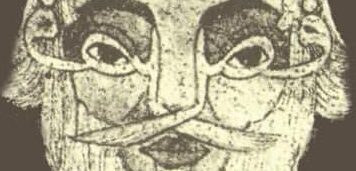
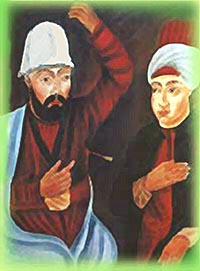
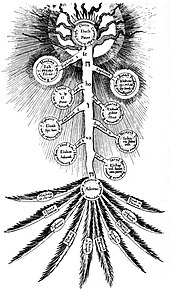
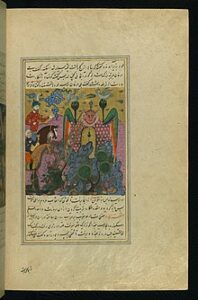
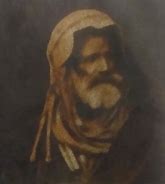
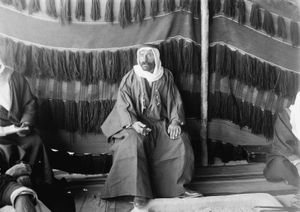
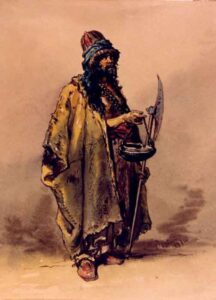
İlk yorum yapan siz olun